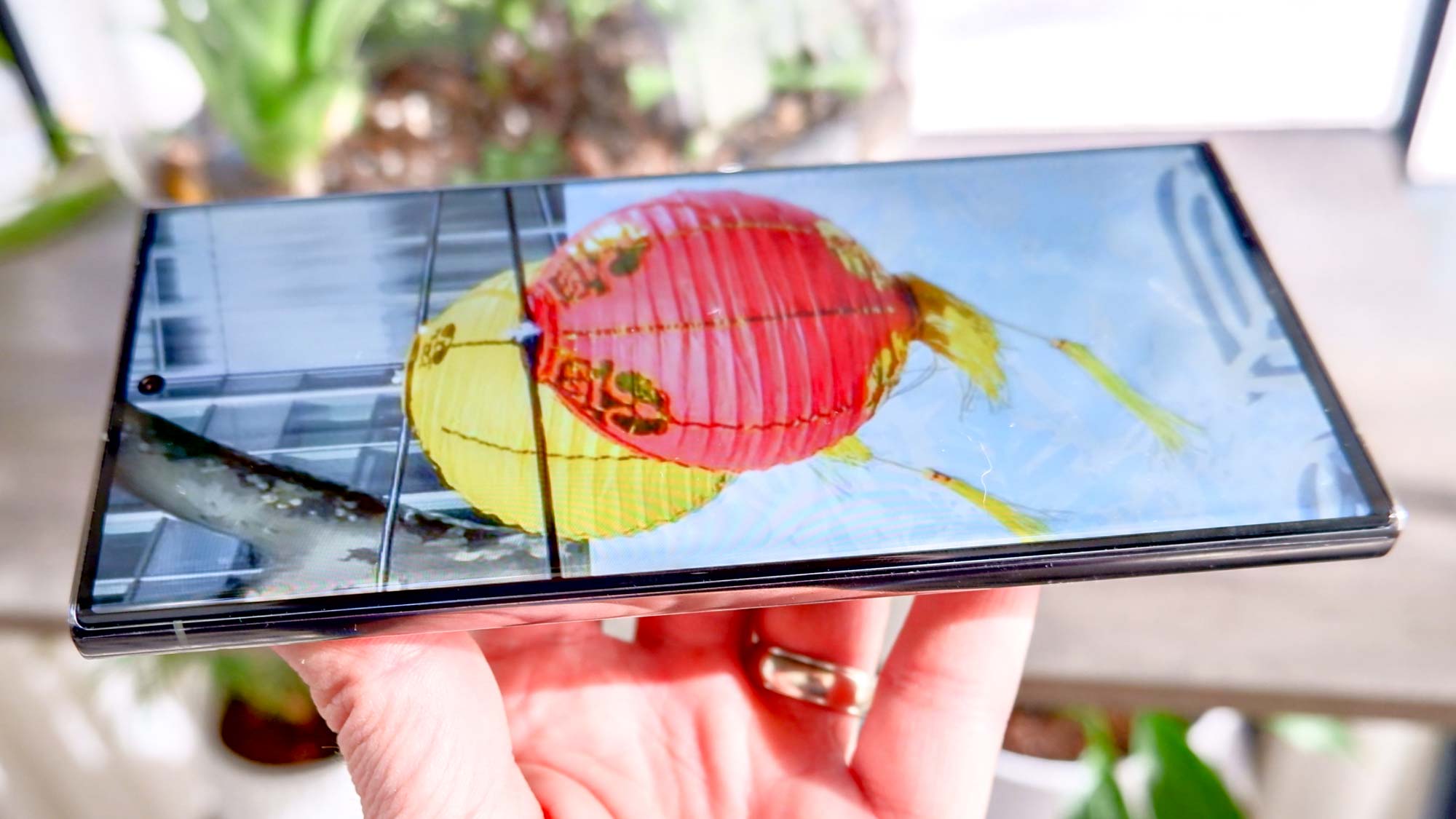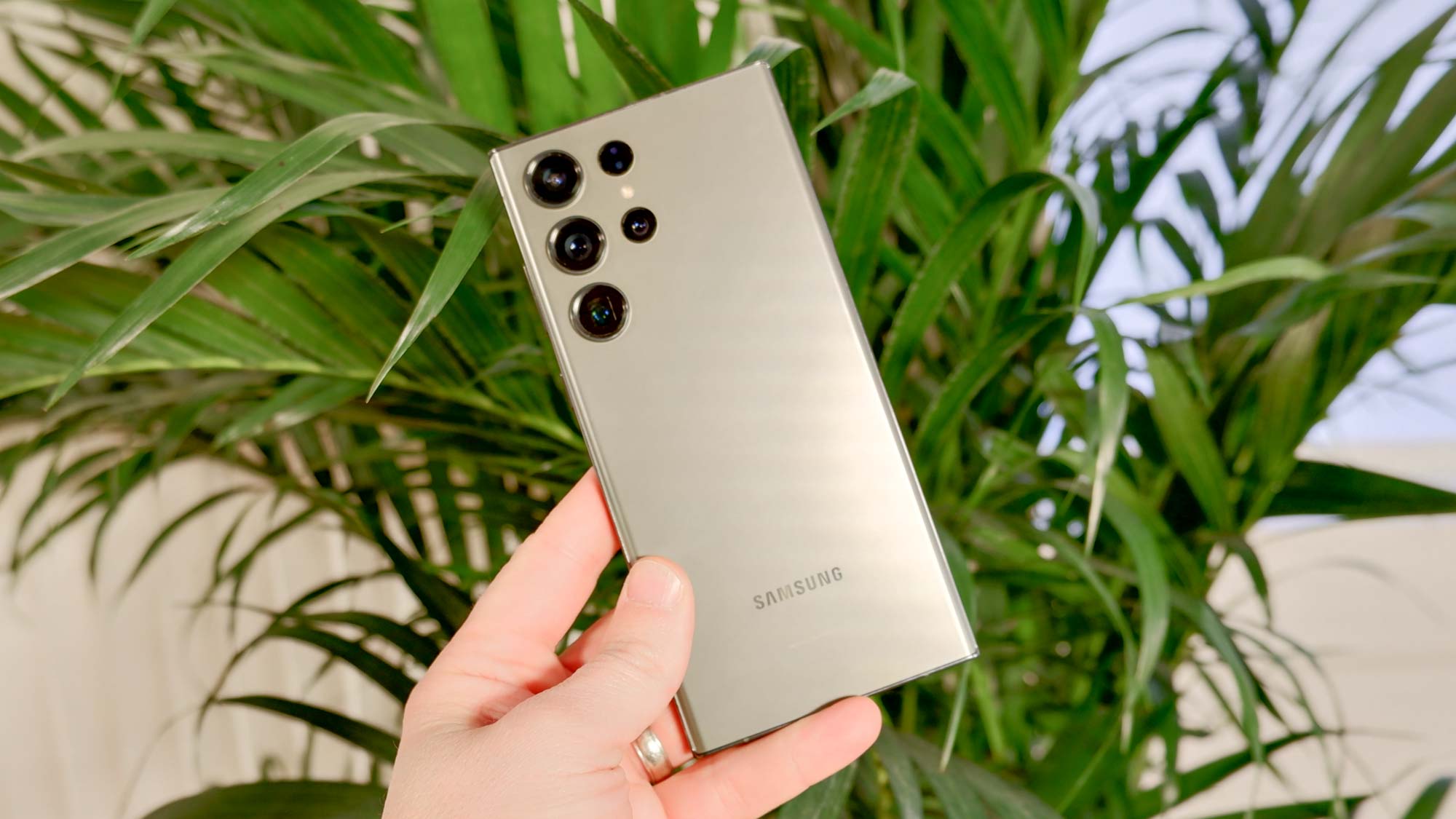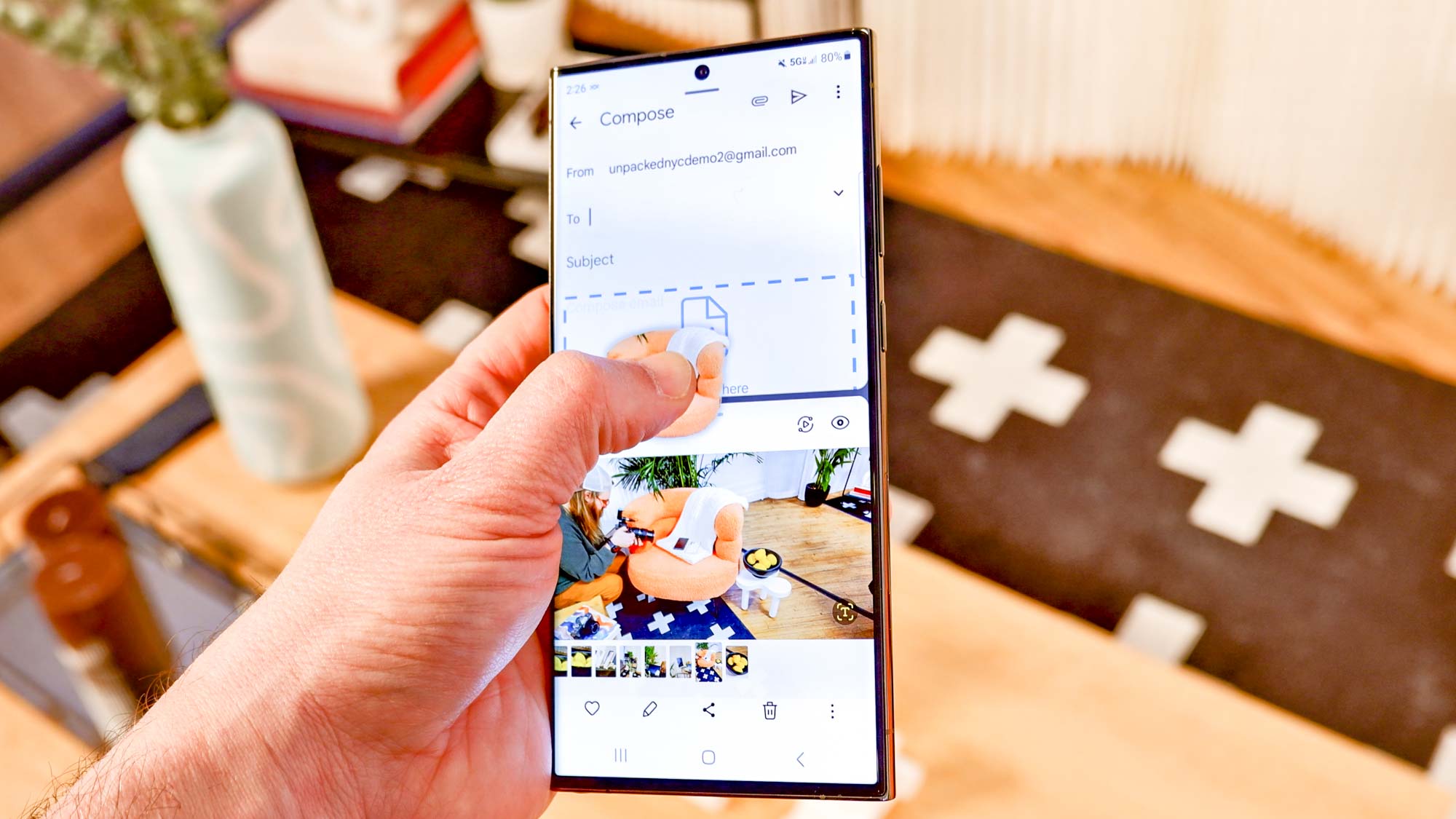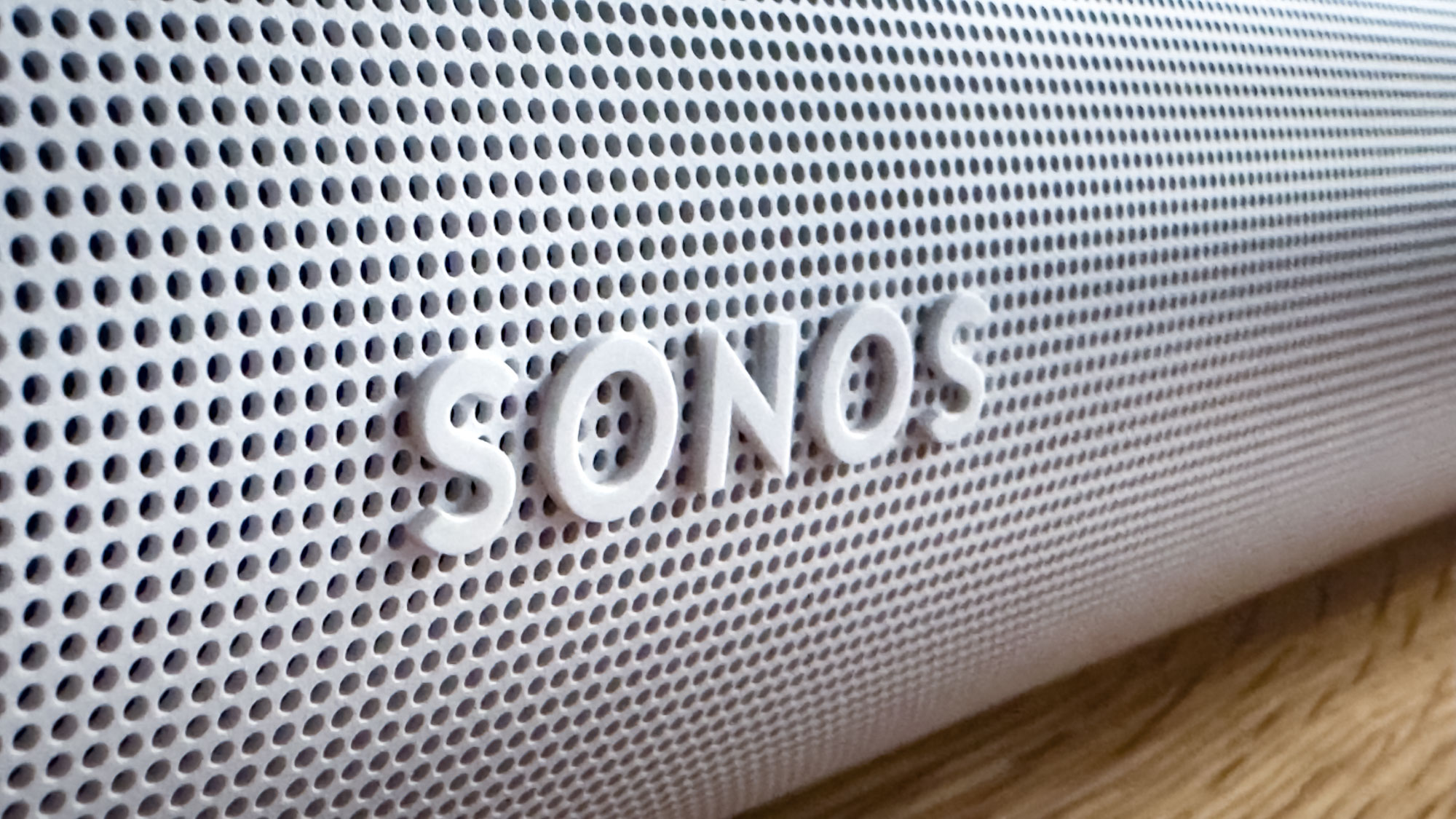Hey, Samsung — It’s time to ditch curved screen phones
Curved phones have had their chance, and now it's time to give them the boot

Earlier this week saw the launch of the Samsung Galaxy S23 Ultra, the most premium Samsung smartphone you can get without needing a foldable display. But while the phone lacks a hinge, the S23 Ultra isn’t totally flat. Like its predecessors, and a number of other premium smartphones, the Galaxy S23 Ultra has a curved Edge display.
Believe it or not, the Edge display dates back almost a decade, with the single-curve Edge display launching on the Galaxy Note Edge in late 2014 and the double-edged Galaxy S6 Edge arriving the following April. Eight and a half years isn’t a bad run, but it’s now about time Samsung and other phone makers called it quits and killed off the curved smartphone display for good.
Curved edge displays serve no functional value
Back when Samsung announced the Galaxy Note Edge, it promised a bunch of extra features for the single curved edge. The idea was it would function almost like a second display, working independently of the main screen and capable of changing depending on what was going on. Touted features included audio controls, tickers for news or sports, an app tray with shortcuts to your favorite apps and so on.

It didn’t take long for those features to more or less vanish. As The Verge notes during its time with the Galaxy S6 Edge, the edge display didn’t live up to promises that the curve offered some unique functionality. The features were deemed to be gimmicky, and those that weren’t (like an alarm clock mode) were difficult to activate quickly.
Fast forward almost eight years, and little has changed. Samsung may not be the only phone maker offering curved Edge-style displays, but none of them appear to have offered any serious practical function. The ones that have tried, like Huawei or Motorola, only seem to offer minor features that could easily be accomplished without it.
When OnePlus incorporated this design in the OnePlus 7 Pro, I asked what the purpose was. But the company’s own admission, and contrary to its then-stance of “no unnecessary features”, the curved display was chosen purely for aesthetics, and to help hide the bezels, rather than offering any actual function.
Of course that’s not true of all curved displays. A number of PC gamers swear that curved gaming monitors help improve the immersion, among other benefits, which would explain why they’re so easily available. Though, much like every other topic in gaming, there are people who disagree, and curved monitors do have some drawbacks you don’t get on a flat screen.
Get instant access to breaking news, the hottest reviews, great deals and helpful tips.
The main difference here is that, gimmick or not, a curved monitor offers something that makes it a justifiable purchase. The Edge display, even after all these years, still can’t manage that.
Curved displays cause unnecessary problems
I’m coming up to my fourth anniversary of using a curved screen phone on a day to day basis, and I’ve experienced a bunch of problems with them over that time. Problems that have cemented the opinion that this fad needs to end pretty soon.
My main issue is that a curved display can make it much harder to use your phone properly. The scale of that depends on the phone in question, but common problems include accidental touches, warped visuals at each edge, or difficulty getting the phone to register input at those same extremes.

Back in my days playing Pokémon Go, I found that switching to a curved screen phone meant I had to relearn how to throw a curveball. Anyone who played will know it’s an important skill to have, and the curved display made it that much harder to accomplish. While niche, it’s indicative of the problems that can occur when you wrap around the screen this way.
It’s also worth noting that the Samsung Galaxy S23 Ultra has a slightly less-pronounced curve than previous devices like the Galaxy S22 Ultra. As we noted in our review of the newest device, this makes the screen flatter and more comfortable to write on. S Pen support is one of the key features of the Galaxy S Ultra range, and if the curved display hinders that, maybe it’s time to reconsider that design.
My main issue is that a curved display can make it much harder to use your phone properly.
It’s not the first time this shrinking has happened either, and the curve on the original Galaxy Note Edge was a lot more pronounced. But that curve still remains, and the problems it causes won’t completely go away. Plus shrinking the curved edge would make it much harder for Samsung, or another phone maker, to change tact and figure out an actual non-gimmicky function for the design.
To top it all off, not having a perfectly straight and flat display makes it much harder to properly apply a screen protector. I found this to be especially true with tempered glass, and in my experience they had a habit of starting to unstick in the corners and edges. I’ll admit I am pretty terrible at applying screen protectors cleanly, but that definitely should not be happening.
While phone makers would like to tell us that they use the latest and best super-strong glass in their displays, that’s still not enough. Not only are the curved areas of a display more fragile than the flat bits, but have you ever looked at your phone screen under a semi-bright light? Odds are you’ll see all the micro-scratches even Gorilla Glass Victus can’t protect you from, which was enough to make me wish I’d picked up a screen protector sooner.
I don’t even like the look of curved displays
For some people, all those problems can be dismissed by the fact they like the look of a curved display. Phones are also a fashion accessory after all, and some people prize looks and aesthetics above all else. Design and branding is a big part of what makes iPhones so popular compared to competitors who may have better features.
I know some of my colleagues disagree, but the look of a curved phone screen does absolutely nothing for me. It’s not that I dislike the look, rather there’s nothing about the aesthetic that sparks joy in my brain. Especially not compared to the modern trend of flat-edged phones.
I’ve never been a major fan of iPhones, but even I have to admit that the flat-edged iPhone 14 looks a heck of a lot better than the curvy display of the Google Pixel 6 Pro I use every day. Unfortunately the curved edges were a necessary evil, if I wanted to take advantage of the Pixel 6 Pro’s impressive photography capabilities.
Bottom line
That lack of visual appeal combined with the impracticalities of curved displays means I would actively avoid them if I could. It’s just unfortunate that they seem to be considered a must-have for a lot of premium devices — and the premium features I do have an active interest in.
Curved phone displays had a good run, but it’s about time we all admitted to ourselves that they’re just not working out. Let’s retire the feature and agree to use flat displays from here on. Samsung started this trend, and it can do its part to end it.
Then phone makers are free to jump on the next bandwagon, perhaps foldable phones?

Tom is the Tom's Guide's UK Phones Editor, tackling the latest smartphone news and vocally expressing his opinions about upcoming features or changes. It's long way from his days as editor of Gizmodo UK, when pretty much everything was on the table. He’s usually found trying to squeeze another giant Lego set onto the shelf, draining very large cups of coffee, or complaining about how terrible his Smart TV is.
